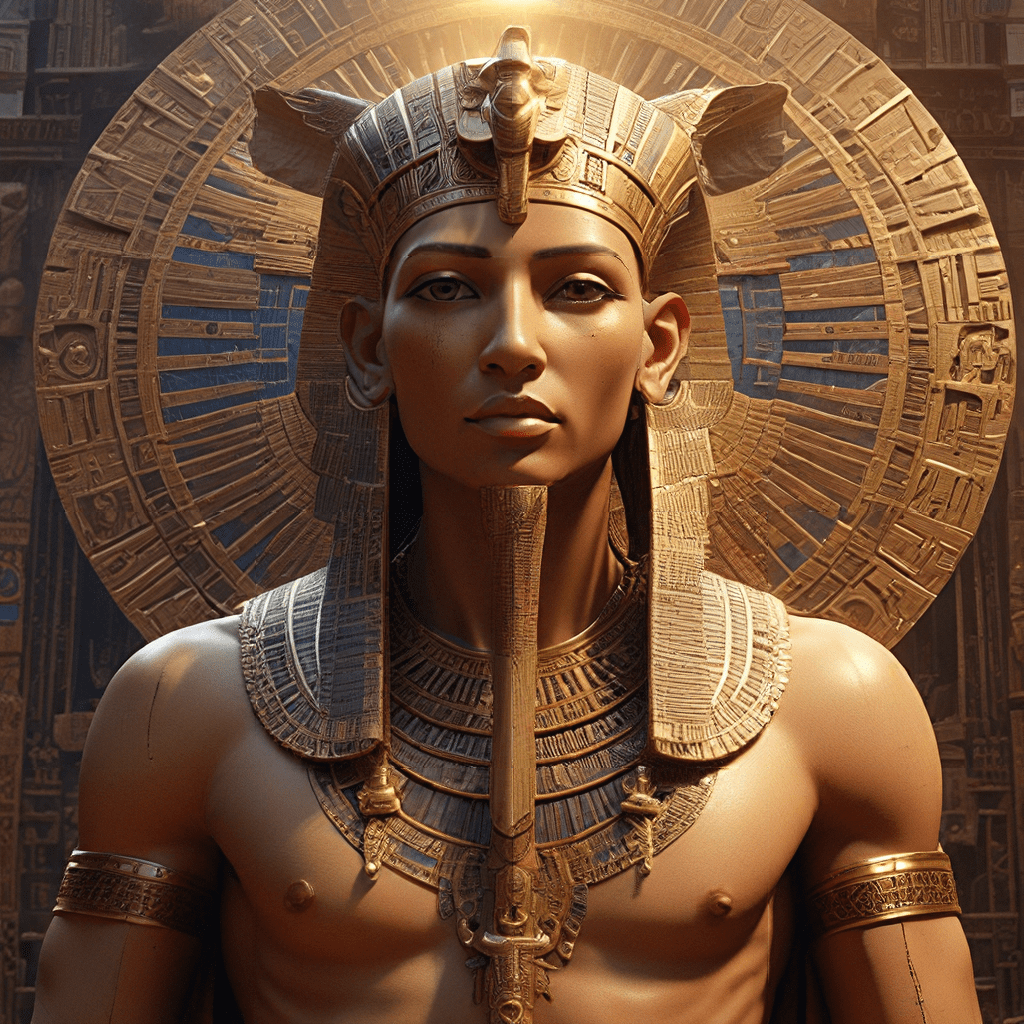I. Introduction: Ptah – The Divine Craftsman
In the vast tapestry of ancient Egyptian mythology, Ptah stands as a pivotal figure, revered as the god of creation, craftsmanship, and rebirth. His name, often translated as “the Opener,” reflects his role as the architect of existence, shaping the world from the very beginning. Ptah’s influence extended far beyond mere physical creation; he was also seen as the source of all thought and action, the divine mind that brought order and harmony to the universe.
II. Ptah’s Creation Myth: Shaping the World
Ptah’s creation story is a testament to the power of thought and word. According to Egyptian beliefs, Ptah, through his divine intellect, envisioned the world and then articulated its existence into being. The very act of speaking, uttering the “words of power,” gave form to the cosmos. In this creation myth, Ptah is not a solitary figure; he is accompanied by the concept of “Ma’at,” the divine order and cosmic harmony that governs the universe. Ptah’s creation was not a chaotic outburst, but a deliberate act guided by Ma’at, ensuring balance and justice within the world.
III. Ptah as the Architect of the Universe
Ptah’s role as the divine craftsman extended beyond the initial creation of the world. He was deeply associated with the construction and artistry of ancient Egypt. As the patron deity of artisans and builders, the Egyptians believed that Ptah guided their hands and minds in shaping the magnificent temples, pyramids, and monuments that still stand as testaments to their ingenuity. Every aspect of craftsmanship, from the carving of stone to the weaving of intricate fabrics, was seen as a reflection of Ptah’s divine artistry.
IV. Ptah’s Link to Memphis: The City of the Memphite Triad
The city of Memphis, the ancient capital of Egypt, was considered Ptah’s earthly domain. Ptah was revered as the patron deity of Memphis, and his magnificent temple, the “House of Ptah,” stood as a symbol of his divine presence. Ptah’s influence over Memphis extended beyond the city itself; he was also the central figure in the Memphite Triad, a prominent group of deities. Along with Sekhmet, the lion-headed goddess of war and protection, and Nefertum, the god of perfume and creation, Ptah formed a powerful trinity that reflected the interconnectedness of creation, power, and beauty.
V. Ptah’s Role in the Afterlife: Rebirth and Transformation
Ptah’s influence extended beyond the earthly realm into the afterlife. The Egyptians believed that Ptah played a vital role in the process of rebirth and transformation after death. After a person’s physical body died, Ptah would intervene in the underworld, shaping the deceased into a new form for the afterlife. This process was often depicted in Egyptian art and mythology as a kind of divine sculpting, with Ptah using his tools to prepare the soul for its journey into the next world. Ptah’s role in the afterlife highlights his importance as a god of both creation and renewal.
VI. Ptah and the Heart: The Seat of Thought and Emotion
The human heart held profound significance in ancient Egyptian culture, serving as the seat of thought, emotion, and action. This connection aligned with Ptah’s own nature as the creator and orchestrator of the universe through thought and word. In Egyptian mythology, the heart was seen as the source of all creation, mirroring Ptah’s role as the divine mind that brought the world into being.
VII. Ptah’s Symbolism: The Aker, the Djed Pillar, and the Scarab
Ptah’s importance in Egyptian mythology is further reflected in the powerful symbolism associated with him. The Aker, the mythical being who represents the horizon, symbolized Ptah’s role as the creator of the cosmos and the source of all life. The Djed pillar, representing stability and strength, symbolized the divine order that Ptah established in the universe. And the scarab beetle, a creature known for its ability to roll a ball of dung, represented Ptah’s connection to creation and renewal, reflecting how he continues to shape and re-shape the world. These symbols combined represent Ptah’s multifaceted nature as a god of creation, order, and regeneration.
VIII. Ptah in Egyptian Art and Literature: Depictions and Stories
Throughout Egyptian art and literature, Ptah is depicted in countless forms, each offering insight into his divine attributes. In sculptures, he is often portrayed as a majestic figure, adorned with a long beard and a double crown, symbolizing his power and authority. In paintings, he is often seen in scenes depicting the creation of the world, the building of temples, or the journey into the afterlife. These artistic representations further highlight Ptah’s crucial role in shaping both the physical and spiritual realms of the ancient Egyptian world.




